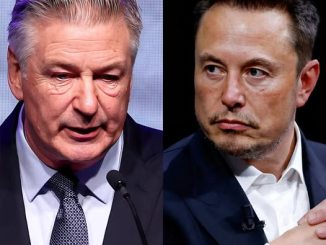
While Tesla’s electric vehicles (EVs) continue to steal the spotlight, the company’s energy division is quietly revolutionizing the way the world stores and utilizes electricity. From solar panels to energy storage solutions, Tesla is not just redefining the future of cars, but also shaping the way homes and power grids operate—ushering in a new era of sustainable energy that aligns with Elon Musk’s vision for a fossil-fuel-free world.
The Rise of Tesla’s Energy Division
While Tesla’s cars like the Model 3, Model S, and Cybertruck often dominate the headlines, it’s the energy division that’s steadily growing behind the scenes, setting the stage for an energy revolution. The company’s Powerwall and Megapack systems are already transforming both residential and commercial energy storage, providing clean, sustainable alternatives to traditional power sources.
Powerwall: Your Energy Backup System
Tesla’s Powerwall has become a symbol of the company’s commitment to solar-powered independence. This compact battery unit stores energy generated by rooftop solar panels during the day, allowing homeowners to power their homes with stored energy during the evening or when the grid is down. This technology is enabling families to disconnect from the grid, reduce their carbon footprint, and have greater control over their energy use.
By pairing solar energy production with storage capabilities, Powerwall gives customers not just the ability to harness renewable energy, but also to use it on their own terms. In regions where electricity costs fluctuate throughout the day, Powerwall helps users avoid expensive peak charges by using stored energy during high-demand periods.
Megapack: Revolutionizing Grid Storage
On a much larger scale, Tesla’s Megapack is redefining how utility companies and large-scale power grids manage renewable energy storage. This massive, containerized energy storage system is capable of storing up to 3.9 MWh of energy and has been deployed in several high-profile projects worldwide.
One of the most notable examples of Megapack’s impact is Tesla’s Hornsdale Power Reserve in South Australia. This 100 MW/129 MWh storage project, the world’s largest lithium-ion battery installation, has proven that battery storage can play a pivotal role in stabilizing grids powered by intermittent renewable sources like wind and solar.
In fact, the Hornsdale project has slashed grid costs by millions and helped the region avoid power shortages during peak demand times. Tesla’s energy storage systems are not just a backup—they’re an integral part of stabilizing grids and ensuring that renewable energy sources can reliably power communities at all times.
A Future Powered by Solar Energy
The broader vision of Tesla’s energy ecosystem goes far beyond individual homes. Musk’s dream is for every Tesla vehicle to be part of an interconnected system that relies on solar power and energy storage to function. In this system, a Model Y could be charged directly from a rooftop solar array, and any excess energy generated by the car’s battery could be fed back to the grid, further reducing dependence on fossil fuels.
By combining the benefits of solar energy with battery storage, Tesla’s energy division can help eliminate the need for traditional, carbon-heavy power sources. This idea isn’t just wishful thinking—it’s already happening on the ground. Tesla’s Solar Roofs and energy storage solutions are already being integrated into homes, businesses, and public infrastructure in a bid to create a self-sustaining, eco-friendly energy ecosystem.
The Road to a Fossil-Fuel-Free World
As the world continues to grapple with the urgency of climate change, demand for clean energy is only going to rise. This is where Tesla’s energy division is poised to play a significant role. Musk has frequently emphasized his goal of creating a world run entirely on renewable energy, and the company’s energy solutions are designed to make that vision a reality.
Tesla’s energy division is already generating billions in revenue, and by 2030, analysts predict that it could rival the automotive division in terms of sales and market value. The key to this success will be Tesla’s ability to vertically integrate its supply chain, producing everything from battery cells to software in-house, which gives the company a significant edge in terms of cost and efficiency.
Despite challenges like supply chain bottlenecks, Tesla’s continued innovation in energy products shows that it is not just a car company—it’s a global energy powerhouse in the making.
Tesla’s Energy Revenue: A Potential Rival to Cars
While Tesla’s automotive division is currently the company’s revenue driver, Musk’s energy vision is beginning to capture investors’ attention. Tesla has already begun to roll out its energy products to large commercial and industrial customers, which significantly expands its potential market. From solar farms to large-scale battery storage, Tesla’s energy solutions are positioning the company to become a key player in the global energy market.
By 2030, Tesla’s energy division could be generating more than $30 billion annually—with solar panels, energy storage, and solar roofs all contributing to a diversified revenue stream that will allow Tesla to continue its push toward clean energy dominance. Musk’s gamble on this sector is becoming more evident, and the success of the Powerwall and Megapack is proving that energy storage is the future of energy production.
Challenges Ahead
Of course, Tesla’s energy division is not without its challenges. Global supply chain issues, fluctuating demand for batteries, and competition from other clean energy firms could hinder growth. Moreover, Tesla’s energy products are still a relatively small part of the company’s overall business compared to the automotive division.
However, Musk’s ability to innovate and vertical integration could give Tesla a significant edge over competitors. As electric vehicles and renewable energy technologies become increasingly intertwined, Tesla’s role in the future of energy is undeniable.
Conclusion: The Silent Revolution
While Tesla’s cars grab the headlines, it’s the energy division that may one day prove to be the company’s most impactful legacy. From solar-powered homes to gigawatt-scale battery storage, Tesla’s energy solutions are quietly transforming the global energy landscape. If Musk’s vision comes to fruition, this under-the-radar division may prove to be the key to a fossil-fuel-free world—making Tesla not just an automaker, but a cornerstone of the clean energy revolution.
As the world moves toward sustainable energy solutions, Tesla’s energy division is shaping up to be a powerful force in making that vision a reality. Watch this space—Tesla’s energy future may be just as disruptive as its automotive success.


